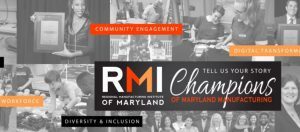
CEO Jeff Galvin and American Gene Technologies’ Spinoff, AddImmune, Offer Hope to End the HIV Epidemic
August 9, 2023
This transcript originally appeared via Think – a national technology and operations advisory practice.
A Cure for HIV: What If … Why Not?
Ending a devastating public health epidemic that has claimed the lives of more than 40 million people across the globe is the critical focus of Jeff Galvin, CEO of American Gene Technologies and a company he is spinning off to develop a cure for the Human Immunodeficiency Virus.
AddImmune, which is expected to complete its spinoff from AGT next year, will prioritize work on a genetically modified one-and-done cell therapy that would not only allow HIV patients to no longer be at risk of infecting others or developing AIDs, but also forgo daily antiretroviral therapy. Currently, ART must be taken every day for the rest of a person’s life.
AGT will continue to develop gene and cell therapies for other infectious diseases, cancers, and inherited disorders. Galvin and the work of both Rockville-based companies earned him Think’s first Champions of Innovation Award for 2024. In the first interview to kick off Think’s INNOVATE 2024 conference, Think Ventures partner Michael Binko spoke with Galvin about how a Silicon Valley entrepreneur is taking the biotech industry by storm.
The following Q&A has been edited for clarity and space.
Binko: You joined American Gene Technologies somewhat into its lifecycle. Could you share a little bit of perspective on how that happened and how you became involved with AGT?
Galvin: I joined the biotech industry, certainly when it was rolling, but American Gene Technologies started because I met Roscoe Brady at the National Institutes of Health [physician and research scientist who developed a successful therapy for Gaucher disease] who showed me viral vectors. I had a vision like an epiphany for the future of pharmaceuticals. I said, ‘OK, if we can modify DNA, we’re really down at the root drivers of everything in the human body. Now that we can reprogram DNA, is there anything we can’t cure?’
Binko: You mentioned the term reprogramming; share a little bit of your perspective coming from the technology and software space in Silicon Valley, and what you associated with the opportunity in life science teams out there.
Galvin: My perspective on humankind at this point is that each one of us is somewhere around 37 trillion collaborating organic computers called human cells that collaborate on a network that’s electric or chemical or physical.
Remarkably, every single computer on this network learns the same operating system, DNA. So, what is the DNA? It’s made up of these genes and the genes are instructions to the cell to make proteins that then can bind it to other things and implement everything in our life. And quite frankly, it’s the most sophisticated computer on Earth. Why aren’t we doing more with that organic computer? Well, the answer is it didn’t come with a manual. This is where the human genome project comes in. We learned the number of genes, and the number of base pairs, and we successfully sequenced it from end to end. That was a remarkable thing to do, but it was the act of doing it, the moonshot of doing that, that yielded so much great technology that has been the fuel for starting what I call DNA Valley right here in Maryland.
Binko: You saw a confluence of innovation or technology or approach that could be brought to an industry that was very established, very rigid, regulated. Do you try to change the established environment? Or do you take a simpler approach? It seems like a little bit of your perspective is that we don’t need to necessarily pay attention to the established way of doing things. We can apply innovation and take it in new directions.
Galvin: The good news is that I was probably the perfect blank slate to go into gene and cell therapy because I wasn’t held back by a lot of common wisdom about the right way to do things. I’ve found ways to leverage things that I’ve learned in other technologies to create efficiencies in this industry that I think will have huge benefits to patients and to companies down the road. Because, you know, in the old drug development industry, there weren’t reusable components.
Now in this industry, you can invent things that could be part of many different drugs, and they can become building blocks that can get you new drugs in the future. One day, I think we can convert this into a cottage industry, where hopefully anybody can cure a disease that they really have passion for and knowledge of. We’re not prepared to do this right now, but eventually we’re going to open our doors to them with all our components. Tell us about your idea, that could work, and we’re going to give them the platform for free. If you ever make any money off of this, we just want a piece of it.
Binko: I think that’s a very interesting perspective. You may not have come out of that peer-reviewed research-driven experience, but do you think it gave you, I don’t want to say naivete, the ability to kind of look beyond that and say, “This has to happen for the industry to evolve?”
Galvin: Saying that I was naïve when I got into this is not a stretch at all and not insulting at all either. If you talk to my wife, she’d be like, “Yeah, we came this close to being destitute thanks to his naivete and his willingness to jump in when the risks were extraordinary.” A pharma company can’t spend $2 billion on something where they’re never going to sell more than 10,000 doses in the lifetime of that drug. But you could develop that drug for $10 million. Tell me a disease that isn’t worth curing? You know, I think we’re going to be talking about 7,000 monogenic diseases falling to gene and cell therapy. This is just inevitable.
Binko: So, the last 18-plus months with your HIV clinical trials, pretty momentous. Share a little bit of perspective on the kind of results that your team achieved.
Galvin: I’m very excited about this. We have a successful Phase I in that we got zero serious adverse events and that’s the primary endpoint of Phase 1 and 100 percent on that, you can’t do much better. Right after Phase 1, we did an Institutional Review Board [group formally designated to review and monitor biomedical research involving human subjects] approved study.
We asked these patients, “Hey, we’ve got some of these cells left in your body. We’d love to see how well it suppresses the virus. Would you be willing to go off your antiretrovirals?” Sixty-seven percent of the patients agreed to go off their antiretrovirals and 100 percent of them showed an effective immune response.
Binko: You announced something recently with the HIV cure that is indicative of some things we talked about making AGT a platform that you can not only set or repeat, but a cure for a disease, but how are you going to approach multiple cures, multiple diseases? Can you share a little bit of the confidence of the business game and maybe what the market should have confidence in AGT in looking at the HIV cure as an opportunity of itself?
Galvin: Since HIV is going so far ahead of everything else in our portfolio, we think it deserves a singular focus from a team and for financing because there’s more work to do. It looks like we have visibility, so the rational thing to do is to put a tremendous amount of rocket fuel. And the way to do it is to spin it out as a separate company (AddImmune) and by separate we’re already partnered up with a very well-regarded Wall Street firm. What we’ll see is an opportunity to prove two things. To prove that HIV is curable, but the secondary proof, is that efficiently create things off my platform. Once you prove it, that comes with financial rewards. So, more money that I can put to AGT and I hope our second act (AddImmune) will be to go out and cure cancer because that will take longer. There’s still a lot of work to do.
Binko: There’s a lot of hope there. So how many other epiphanies will benefit from your yeoman’s task of taking yours forward and they may not have the cost, time, or risk?
Galvin: Hopefully, the garage startup will be reborn in biotech. I think that that’s possible. It’s not going to be an overnight thing, but I think you’re going to find that a lot of small companies just rise organically out of fertile soil like we have here in DNA Valley from Montgomery County up to Frederick and over to Baltimore.
We have this area where you’ve just got the talent, you’ve got the STEM education workforce, you’ve got a huge amount of entrepreneurial talent. You’ve got an industry which is in this incredible growth phase and revolutionary phase where we here are right around the epicenter of it. I think we’re going to see a lot of it right here because this is where it started. I’d like to encourage everybody who’s watching this, just move to Maryland. Because the reality is that you can live a good lifestyle at a reasonable price here and that drives the cost of everything. And you can’t do any better for talent and access to the FDA and NIH, and all these great schools and things that you can do here in Maryland. Why wouldn’t you come to DNA Valley if you want to do stuff with DNA?
Binko: How have you evolved over time as a leader? Was there a point in time where you said, “Oh, my gosh, I did the wrong thing?”
Galvin: That would be pretty much every day for the first 10 years. But sometimes, you keep going because you believe in it so that you can just keep going because you know if you fail, it’ll be a disaster. And so, you know, your demons are chasing you, or whatever motivates you to move forward as part of that journey, because the reality is that entrepreneurial characteristic is a congenital defect that comes with over-optimism. There were many, many times over this whole 15 years where I said, we may not make it. That means that you have a series of crises, it never ever stops, at least three or four a year. Guess what happens? You survive them and it gives you confidence for the next one. How have I grown? I am able to face my fears strategically. I’ve had to solve a lot of problems that have made me a more effective leader because you’ve learned lessons about what you’re doing wrong.
This transcript originally appeared via Think.
- About the Author
- Latest Posts
BioBuzz is a community led, experience focused, biotech and life sciences media and events company. BioBuzz highlights regional breaking news, industry professionals, jobs, events, and resources for business and career growth. Their weekly newsletter is subscribed to by thousands in the BioHealth Capital Region and Greater Philadelphia as the go-to for industry updates.





